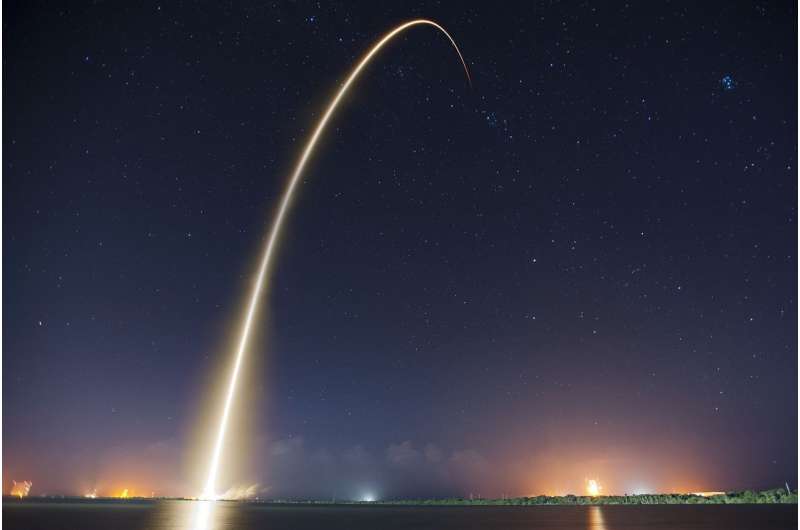NASA's new November targets mean night launch for Artemis

If NASA gets to finally ignite its massive candle for the Artemis I moon mission, it's going to light up the night skies across Florida with three November launch dates that all fall after midnight targeted for liftoff from Kennedy Space Center.
NASA's first attempt to launch the Space Launch System rocket topped with the Orion space capsule falls on Monday, Nov. 14 with a 69-minute window that opens at 12:07 a.m. Two two-hour backup windows are available on Wednesday, Nov. 16 starting at 1:04 a.m. and Saturday, Nov. 19 starting at 1:45 a.m.
If it goes up, SLS with its 8.8 million pounds of thrust at liftoff would become the most powerful rocket to ever launch from Earth besting the Saturn V rockets from the Apollo missions.
Next month's full moon falls on Nov. 8, so the first attempt should feature a waning gibbous moon still rising high in the eastern sky at midnight. Florida's notorious afternoon showers during the summer will also be not as much of a concern in the overnight hours.
If it hits its first target, the uncrewed Orion capsule would make several orbits around the moon traveling farther from Earth than any other human-rated spacecraft before returning on Dec. 9 after more than 25 days for a splashdown in the Pacific Ocean.
Each month presents roughly two-week windows Artemis can make its flight attempts with the November window stretching from Nov. 12-27. Certain days are not available during each window because of the positions of the Earth, moon and other factors.
The primary purpose of Artemis I is the make sure Orion can handle the extremes of a lunar mission including coming in hotter than any other previous human-rated capsule at more than 24,500 mph generating upward of 5,000 degrees Fahrenheit on re-entry.
If it can handle the trip, NASA can move forward with Artemis II with four humans on board for another orbital lunar trip in 2024 followed by Artemis III, which aims to return humans, including the first woman, to the moon's surface for the first time since the Apollo 17 landing in 1972. That flight will come no earlier than 2025 but also depends on SpaceX creating a version of its in-development Starship rocket to take astronauts from Orion down to the lunar surface.
NASA had to scrub two previous launch attempts in its years-long effort to get Artemis I off the ground, with liquid hydrogen leaks from the mobile launcher lines feeding into the SLS proving a consistent culprit. Although NASA fixed issues while at KSC's Launch Pad 39-B following the last scrub on Sept. 3, teams decided to protect its $4.1 billion rocket and spacecraft from the threat of Hurricane Ian, which ended up carving a path that took it right over the space center.
With it safely back in the Vehicle Assembly Building, teams will be able to recharge the batteries on its self-destruct mechanism as well as the batteries on some small satellites that are hitching a ride and will be deployed after Orion breaks away from low-Earth orbit.
Inspection of the hardware showed that minimal work, including some repair of minor damage to the foam and cork that makes up the rocket's thermal protection system, will be needed before its roll back to the launch pad.
It will be the fourth time the 5.75 million-pound, 322-foot-tall hardware atop crawler-transporter 2 will be making the trip to the pad, having previously ventured out for two wet dress rehearsals in the spring, and then back out for its first launch attempts in mid-August.
That four-mile journey could come as early as Friday, Nov. 4.
©2022 Orlando Sentinel.
Distributed by Tribune Content Agency, LLC.





















